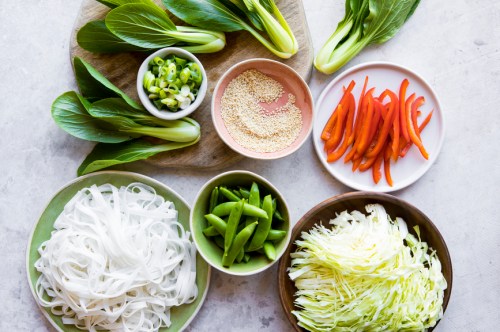I’ll be honest: There are definitely a few lessons from my childhood days that now reside in a cobweb-filled crevice deep within my brain. Think along the lines of the Pythagorean theorem, what a prime number even means, and how in the world to actually do long division on pen and paper. Of course, every now and then, I’ll comb through my memory archives to pull out one of these facts when in the middle of a heated trivia night or while intently watching an episode of Jeopardy! But, for the most part, these lessons have mainly remained untouched (sorry, mom). Kids, stay in school.
By contrast, however, as I grew older and found my true calling in life—aka my absolute obsession with food—I was able to go to culinary school, where I learned several important techniques and lessons that I still use in my everyday life. Aside from correctly learning to make the five mother sauces and tournée a potato (UGH, IYKYK), week one of culinary school taught me one of the most important ways to succeed in a kitchen. And, no, I’m not talking about always seasoning your food (though, of course, this is a close second).
By far, the most valuable time-saving cooking technique I learned was the importance of mise en place. This is a simple culinary skill that involves thoughtful food preparation (and Marie Kondo-style organization) ahead of time. The good news is that it’s super easy to master, and will make a noticeable difference in how easily you can meal prep for the entire week or quickly you can get dinner on the table fast.
What is mise en place?
Mise en place is a French-derived culinary phrase that refers to “putting everything in its place” or “gathering” items together. In terms of cooking, however, this translates to setting up your workstation before actually starting to make your dish.
Think of an ingredient-and-recipe meal kit company that sends over a box with individually packaged foods ready to cook. The concept of mise en place is virtually the same in that you prep your ingredients separately to have them on hand and ready to use as the recipe calls for it. Read: Mastering mise en place means no more frantic, last-minute onion-chopping while the rest of what’s in your pan starts to burn.
4 tips for setting up mise en place successfully
1. Read through the recipe multiple times
To guarantee you’re fully ready to start cooking, the first thing you need to do is read through the entire recipe. Not once, but twice. As you read through the ingredients and the steps, take notes on how your food should be prepped to reduce the amount of last-minute chopping, dicing, and mincing.
2. Prep all of your ingredients before you start cooking
Once you’ve read through all of your ingredients, you’ll want to prep them before you start cooking—seriously, emphasis on before. For example, the recipe might call for a large carrot, but does it also say that you should wash, peel, and slice it into batonnets (stick-size cuts), or did you need to julienne it, aka cut your carrot into matchsticks? Repeat the process for each ingredient, and place each one into individual bowls. Or, if you want to make clean-up even easier, line a large baking sheet with parchment paper and drop the ingredients into small piles with space between them to grab and use as needed.
3. Grab all of the tools you’ll need beforehand
Aside from prepping each of the ingredients accordingly to make them easy to dump into the pan, bowl, or pot, you’ll also want to ensure you have all of the tools needed to make the recipe ready to go. This will help spare you from digging through the cabinets to find the dusty strainer as your previously al dente pasta quickly turns into mush. My culinary school instructor compared a well-executed and thoughtful mise en place set-up to a choreographed dance routine that flows without hiccups, hesitation, or sheer chaos. Yes, cooking can be somewhat unpredictable at times; however, mise en place will help minimize the chance of any potential disasters.
4. Clean, clean, and clean
To ensure your mise en place is as effective as possible, you’ll want to clean, clean, and clean as you go. This is likely one of the most oft-used phrases you’ll hear in a professional kitchen (aside from “yes, chef”). To make things as seamless and organized as possible, cleaning up as you cook will prevent the dishes from piling up to the ceiling by the time you are done cooking. It’ll also help prevent any cooking-related accidents as you flounder for clear counter space (to put the hot pot) or nearly chop your finger off (while chopping veggies on an overcrowded cutting board).
TL; DR: These simple mise en place steps work well not only in a professional kitchen, but also while cooking at home and even meal prepping for the week. Say goodbye to endless hours spent making a recipe, and say hello to efficient, clean, and delicious cooking days forever.
Sign Up for Our Daily Newsletter
Get all the latest in wellness, trends, food, fitness, beauty, and more delivered right to your inbox.
Got it, you've been added to our email list.










